Building a virtual Solar CITIES IBC tank Biodigester teaches you how to build one in reality! And yes, you can do this at home... virtual and real!
There was a time when only planners and architects and engineers had access to the toolkits necessary to turn dreams into realities.
Those days have changed.
For several years now, would be world builders have had a plethora of pre-visualization tools at our disposal.
Almost every conceivable piece of the real world has been modeled in virtual reality and most are available for free at https://3dwarehouse.sketchup.com/. You simply type the object you would like to play God with into the search engine, scroll through the offerings in the virtual warehouse, and download the 3d file to your computer. Then you can bring it into the 3d visualization program of your choice and build your world.
The real revolution, as far as we're concerned at Solar CITIES, came with the introduction of Blender 3D, an open source mesh modeler, game engine, video editer, compostor and animation software package all rolled into one. We use Blender, which is completely free and completely awesome, to create our own instructional materials using models in virtual reality so people can learn to easily make their own biogas and solar and aquaponic systems in real reality.
We'll use the example of creating a virtual version of the Solar CITIES IBC based home biogas system to show you how you can join us in "Blending Realities: Creating Eutopia by Blending the Virtual and the Real" (also the name of a facebook group you can join!)
Solar CITIES' IBC Biogas system 2014 has gotten easier than ever to build. Innoventor T.H. Culhane has field tested this 3 uniseal, 3 pipe system at Mercy College New York, Kibbutz Lotan Israel, the Kelsey Household in Chester County Pennsylvania, the Puffer Household Basement in Tillson New York, the Rockefeller Household basement in Hudson New York, and at the Batey Relief Alliance in the Dominican Republic. It is now a standard for Solar CITIES trainings and can be built in less than an hour. Here we invite you to build a virtual model to get the training and understand the system before you commit the money and energy and materials to building a real one.
Our work process is as follows:
We go to 3dwarehouse and download the .kmz files of the objects we want to include in our tutorials. (3dwarehouse is for Google Sketchup, so if you download the .skp and you don't have the expensive version of the software you won't be able to export it for use in another program!) If there is no .kmz but there is a collada file (.dae), download that.
We change the .kmz file extension to .zip (you will get a warning that the file might then be unusable, but you can ignore that). If you found a collada file you don't have to change the .dae.The easiest way to change the .kmz file extensions to .zip is to put all of your .kmz files in one folder, shift right click on that folder and open a command line and type in "ren *.kmz *.zip.
[[{"fid":"869","view_mode":"content_medium","fields":{"format":"content_medium","field_file_image_alt_text[und][0][value]":"","field_file_image_title_text[und][0][value]":"","field_folder[und]":"123"},"type":"media","link_text":null,"attributes":{"title":"3dwarehouseibctank.jpg","height":253,"width":400,"class":"colorbox media-element file-content-medium"}}]]
[[{"fid":"868","view_mode":"content_medium","fields":{"format":"content_medium","field_file_image_alt_text[und][0][value]":"","field_file_image_title_text[und][0][value]":"","field_folder[und]":"123"},"type":"media","link_text":null,"attributes":{"title":"3dwarehouseibc.jpg","height":257,"width":400,"class":"colorbox media-element file-content-medium"}}]]
We unzip the resulting zip file. There will then usually be a "models" folder with a .dae file inside (since a .kmz is a zipped up .dae file!).
Alot of the models folders will contain files called "untitled.dae" and have a corresponding "untitled" folder with textures in it that go along with the model. You can change the name of the .dae file so you know what it is, but don't change the name of the textures folder. If it is called "untitled" leave it that way or when you bring the .dae into Blender it won't know where to find the textures. Our advice is to have an easily understandable named models folder with an easy to recognize named .dae file inside and a texture folder that still has whatever name it had when you unzipped the .kmz.
[[{"fid":"872","view_mode":"content_medium","fields":{"format":"content_medium","field_file_image_alt_text[und][0][value]":"","field_file_image_title_text[und][0][value]":"","field_folder[und]":"123"},"type":"media","link_text":null,"attributes":{"title":"extensionchange.jpg","height":293,"width":400,"class":"colorbox media-element file-content-medium"}}]]
We import the .dae file into Blender and start playing with it!
(You can get more details on importing from Sketchup to Blender here: http://www.katsbits.com/tutorials/blender/sketchup-import.php)
There are a couple of things to keep in mind when importing the .dae into Blender. First is, check the "import units" toggle at the bottom of the import screen (highlighted in yellow in this picture. Notice, by the way, that while I renamed the dae file from untitled.dae to IBC.dae, I left the texture folder named "untitled"):
The next thing you will notice is that when you bring complex geometries like an IBC from Sketchup to Blender it will have lots of separate pieces (the cage is a different mesh than the polyethylene tank, for example). This is great for doing detailed work, but can get in your way when working with entire objects for simple animation. We always make a duplicate object, put it on a separate layer, and then hit ctl-J to join all the meshes. That way we have two objects to play with, one that can be separately manipulated part by part and another that is just one coherent object. Since we aren't animating the cage or valves of an IBC we usually just work with the joined version of the object.
At this point you may see that when you join some objects brought in from 3d warehouse the objects units get messed up (the IBC, for example, gets super big). So you will want to have Blender set for metric units (or imperial, as you like; metric is easier). To do that you can follow this video: https://www.youtube.com/watch?v=fdXzw225KVU. The skinny of it is that you click on the "Scene" button (one of the buttons on the right on the same row as the world, materials, texture and modifiers buttons) and turn on metric. You will notice that the default cube is 2m x 2m and the default cylinder is about 60 cm. The IBC tank comes in at about 1 m which is good since it is roughly a cubic meter biogas volume tank in real life.
[[{"fid":"874","view_mode":"content_medium","fields":{"format":"content_medium","field_file_image_alt_text[und][0][value]":"Blender Units","field_file_image_title_text[und][0][value]":"Blender Units","field_folder[und]":"123"},"type":"media","link_text":null,"attributes":{"alt":"Blender Units","title":"Blender Units","height":204,"width":400,"class":"colorbox media-element file-content-medium"}}]]
The first thing we do when making a virtual IBC biogas system is create our PVC pipes. You could download them from 3D warehouse too, but it is just as easy to create them in Blender. Add a cylinder mesh and scale it so it has a diameter 50mm (approximately 2 inches, but we are working in metric like civilized people!) and a length of 1.5 meters.
Step one with the cylinder is to change the "cap fill type" (left side of the screen) to "Nothing". This makes the cylinder hollow. You have to do this as soon as you bring the cylinder in to the scene because if you move it or manipulate it in any way the option disappears. Once you have your cylinder save your file, then change the dimensions to .5m in X, .5m in Y and 1.5m in Z. You may find you have problems if you try to type the numbers in for some strange reason, so use the slider to get close, like .523 or something, then backspace out the extra digits. Then duplicate your pipe two times so that you have three 50 mm (2 inch) pvc pipes 1.5 meters in length.
[[{"fid":"875","view_mode":"content_medium","fields":{"format":"content_medium","field_file_image_alt_text[und][0][value]":"","field_file_image_title_text[und][0][value]":"cap fill nothing","field_folder[und]":"123"},"type":"media","link_text":null,"attributes":{"title":"cap fill nothing","height":279,"width":400,"class":"colorbox media-element file-content-medium"}}]]
[[{"fid":"876","view_mode":"content_medium","fields":{"field_file_image_alt_text[und][0][value]":"","field_file_image_title_text[und][0][value]":"Pipe dimensions","field_folder[und]":"123"},"type":"media","link_text":null,"attributes":{"title":"Pipe dimensions","height":274,"width":400,"class":"colorbox media-element file-content-medium"}}]]
[[{"fid":"877","view_mode":"content_medium","fields":{"format":"content_medium","field_file_image_alt_text[und][0][value]":"","field_file_image_title_text[und][0][value]":"3 pipes","field_folder[und]":"123"},"type":"media","link_text":null,"attributes":{"title":"3 pipes","height":242,"width":400,"class":"colorbox media-element file-content-medium"}}]]
Now bring in your Uniseal model. Shift right click on both parts of the model and hit ctl J to join them into one object. Then select that uniseal object and hit alt P. In Clear Parent select "clear and keep transformation". This will erase the "empty" (the crossed lines) without erasing the uniseal itself and will enable you to make duplicate uniseals that aren't parented to the annoying empty that comes with the model from 3Dwarehouse. Go to "Object" and "Transform" and set "Origin to Geometry" so the little orange dot appears in the center of the uniseal.. Create a black material for the uniseal and set its dimensions to X 8.5cm, Y 8.5 cm and Z 1.5 cm. This should make it fit around the pipes you created.
Hit shift D to duplicate twice so that you have three uniseals, one for each pipe.
[[{"fid":"878","view_mode":"content_medium","fields":{"format":"content_medium","field_file_image_alt_text[und][0][value]":"","field_file_image_title_text[und][0][value]":"3 uniseals","field_folder[und]":"123"},"type":"media","link_text":null,"attributes":{"title":"3 uniseals","height":268,"width":400,"class":"colorbox media-element file-content-medium"}}]]
The illustration shows one of the uniseals on the pipe but this is just to check that they fit. You will be inserting the uniseal in the tank first and putting the pipe through the uniseal. In the real world it will not work if you put the pipe through the uniseal first because the way uniseals work is that you create a snug fit with the 2" inner diameter uniseal in a 3" hole in the IBC tank that has been prepared with silicone and then, while the silicone between the tank and the uniseal is drying you soap the pipe and force it down through the uniseal until the pipe hits the bottom of the tank. The pipe expands the unseal to form a tight seal with the tank.
Cutting holes in the top of the IBC tank is actually trickier in Blender then it is in real life. In Blender we have to go to our original IBC mesh model import and remove the polytank from the cage, duplicate it, scale it to the right size then use the bisect tool in edit mode to cut a square out of each of the triangles on the top. Then we subdivide each square twice, then remove the center vertex to get the following:
[[{"fid":"879","view_mode":"content_medium","fields":{"format":"content_medium","field_file_image_alt_text[und][0][value]":"","field_file_image_title_text[und][0][value]":"Bisect tank top","field_folder[und]":"123"},"type":"media","link_text":null,"attributes":{"title":"Bisect tank top","height":259,"width":400,"class":"colorbox media-element file-content-medium"}}]]
Once square holes are cut in the mesh, all 8 vertices surrounding the squarish hole are selected and then we hit subdivide twice to increase the number of vertices to 32. With these 32 vertices selected we then hit E for extrude and left click to commit. Then we hit s for scale and Shift Z to lock out the Z axis (so we only extrude in x and y). Then we scale in toward the center.
At this point we go to "Mesh: Transform: To Sphere" (or hit Shift-Alt-S) and create a round hole that is 3 inches or 7.6 cm, large enough to fit the uniseal. To get it to be a perfect circle set the Sphere factor on the left toolbox to 1.00.
[[{"fid":"880","view_mode":"content_medium","fields":{"format":"content_medium","field_file_image_alt_text[und][0][value]":"","field_file_image_title_text[und][0][value]":"To Sphere","field_folder[und]":"123"},"type":"media","link_text":null,"attributes":{"title":"To Sphere","height":396,"width":400,"class":"colorbox media-element file-content-medium"}}]]
[[{"fid":"881","view_mode":"content_medium","fields":{"format":"content_medium","field_file_image_alt_text[und][0][value]":"","field_file_image_title_text[und][0][value]":"Holes in tank","field_folder[und]":"123"},"type":"media","link_text":null,"attributes":{"title":"Holes in tank","height":334,"width":400,"class":"colorbox media-element file-content-medium"}}]]
In practice making the holes in the real IBC is much easier. You either use a 3 inch hole saw or heat up a three inch piece of metal pipe and melt it through.
Once you have the holes in the tank you can stick your uniseals in them. Then you prepare your pipes. The feeding pipe needs its "shaved angle" at the bottom for the food waste to come out into the bottom of the tank. To do this in Blender, add a cube to the scene and rotate it 45 degrees and place it on the bottom of the pipe so it creates a shaved angle, then right click on the tube, add a boolean difference modifier and select the cube to do the boolean from the menu.
For the other two pipes create a cylinder and scale it so that it is small enough to cut a hole an inch and quarter diameter or so in the 2 inch pipe. For the gas outlet pipe place the tube next to the IBC so that the bottom of the tube is in line with the bottom of the tank and stick the little cylinder in the tube where it is just below the top of the tank. Right click the tube and add a Boolean difference modifier and use the cylinder to make the cut.
With the food outlet pipe pick a place on the tube corresponding to where the middle of the tank would be and make your Boolean cut there.
Once you have done this your pipes are ready and you can place them in the tank, inserting them through the uniseals until they "touch" the bottom. We put the feeding and gas outlet tubes on one side of the tank and the fertilizer pipe on the other side diagonally across from the feeding pipe.
The last step for this model is to import your 2 " to 1/2" PVC reducer meshes and your 1/2 ball valve and barbed nipple and create bits of 1/2 pvc to connect them using cylinders.
Choose a black material for the tank itself, and you are done.
If you are really ambitious, "pour in" some lava rock and plastic bioblocks or other pourous media to increase surface area, and try your hand at a fluid simulation. Then go out and get the real materials and try to build one in your basement or backyard or on your porch or roof.
You will find it will probably take less time to make a real one than it took to create a virtual one!
[[{"fid":"882","view_mode":"content_medium","fields":{"format":"content_medium","field_file_image_alt_text[und][0][value]":"","field_file_image_title_text[und][0][value]":"IBC lit","field_folder[und]":"123"},"type":"media","link_text":null,"attributes":{"title":"IBC lit","height":225,"width":400,"class":"colorbox media-element file-content-medium"}}]]
Now that we have completed our model of the Solar CITIES IBC tank biodigester, we can use it to create tutorials and instructional materials.
Here is a script I wrote for the narration of a video tutorial using this model:
HOW TO BUILD YOUR OWN SOLAR CITIES IBC-BASED BIOGAS SYSTEM
I thnk its hard for most people to appreciate how easy it is to build your own home biogas system.
Perhaps we want things to be more complicated than they are in order to somehow justify the suffering we've had to endure all these centuries trying to live without domestic biodigesters.
Or perhaps we've simply kept the simple engineering principles out of the hands of the right people – women and children particularly – people who would intuitively understand that the wastes from our kitchens and bathrooms can complete the growth cycle and become soil and food and fuel once again, and would realize that all we are really building is a stomach with a mouth and a throat, an anus and a ureter. This biomimicy is easy to understand if you think of a biodigester as a baby, or as an animal – a fire breathing dragon if you like, rather than a machine.
But it is simple.
Here's how you do it, the Solar CITIES Open Source Way:
Get yourself an old IBC tank – an International Bulk Container. You can find these used IBCs, these pallette based 1000 liter plastic shipping containers, literally all over the world.
Take a 3 inch hole saw and drill three holes in the top of the tank as shown. If you are in a place with no electricity and no power drill, take a piece of metal pipe with a three inch diameter and heat it up and melt the holes through the plastic. We did this in the Dominican Republic with a three inch metal sink strainer. Three inches is 76 mm for those of you doing metric. This is the diameter of the outer flange of the 2 inch uniseals we use.
Next, get yourself 3 two-inch uniseals, grease them up with plumbers silicone and pop them into the holes.
Next, cut three pieces of 2 inch or 50 mm sewer pipe to a length of 1.5 meters.
Designate one of the pipes as the “Feeding pipe” and cut the bottom at a 45 degree angle so that the food waste you put in can slide out easily into the bottom of the tank. This gives the pipe a pointy end. Sand any rough edges and soap up the pipe and the inner ring of the uniseal and firmly push the pipe through the uniseal, twisting as you go, until it reaches the bottom of the tank and stops.
Designate the second of your three pipes as the gas outlet pipe and cut a hole so that it will be just below the top of the digester when inserted through the second uniseal and pushed to the bottom. Yes, you'll have to measure this one as the heights of your IBC can vary. You can do this by putting the pipe in the hole before you put the uniseal in and making a mark with a permanent marker about 2 cm below the place where the top of the tank touches the pipe. Make sure you sand the edges of this hole smooth and flush so it doesn't cut or get stuck on the Uniseal on the way down. Then push the gas outlet pipe into the tank through its uniseal. We like to put the feeding pipe and the gas outlet pipe on the same side of the digester as we find that is where most of the food settles and most of the gas rises and collects.
Designate the third of your two inch pipes the slurry or effluent pipe where the rich organic liquid fertilizer or “compost tea” will exit. We cut a hole in this last pipe (make sure you also sand the edges of this hole smooth and flush so it doesn't cut or get stuck on the Uniseal on the way down) so that when it is pushed down to the bottom through the uniseal the hole will be somewhere near the middle of the tank. We do this because bioactive solids are being digested at the bottom of the tank – mostly carbs and protein, while lipids, oils and fats will rise and be digested at the top of the tank – and we don't want to remove feedstock that is still energy rich. By placing the outflow pipe on the opposite side of the tank, diagonally across from the feeding pipe we maximize the “hydraulic retention time” of the feeding material – that is, the time it spends being digested in the tank – so we can win the maximum amount of energy from it. Since our digesters are a kind of “plug flow” digester, the food we push in one side of the tank is slowly shoved to the other side of the tank when new material is added. But the fertilizer we force out with each feeding has had the best opportunity to get digested, and because we draw it from the middle of the far end of the tank it comes out as a liqued that is nitrogen and nutrient rich but doesn't clog pipes. The sludge can stay in for years and years and only rarely needs to be pumped out to make a solid compost.
With these three pipes in place you are basically done with the digester. The rest is plumbing.
First, we want to take care of the gas outlet pipe. The two inch pipe sticking up above the digester ensures that the gas outlet is well above the water line and is wide enough that manure or other solids you may have put in to inoculate your digester don't clog the pipe and stop the gas from coming out. At the top of this pipe we put a 2 inch to ½ inch PVC reducer, a half inch PVC ball valve, an elbow, and a ½ inch barbed hose connector. We don't glue these on in case we ever need to remove them to clear any possible clogs should they arise.
For the fertilizer outlet pipe we first cut off about 5 centimeters and then attach a 2 inch T, a piece of 2 inch pipe, a 2 inch elbow and a drain pipe leading to the fertilizer bucket. Every time you add ground up food waste and water to the system from the feeding end an equivalent amount of bioslurry will be forced out, because the 90 degree part of the T is lower than the feeding pipe so whenever it is filled the fertilizer pipe will over spill and drain into the bucket. The open sky facing part of the T ensures there will be no vapor lock – otherwise you will get a siphoning effect, such as we experienced when we built one with an elbow instead of a T in Swaziland. A siphon will drain your tank in no time! But with a T the system automatically regulates.
The fertilizer that results is perfect for hydroponic and aeroponic gardens, diluted with grey water 10 to 1. You should never have to buy fertilizer again.
Finally we put a funnel onto the feeding pipe where ground up kitchen scraps – old banana peels and plate scrapings and whatnot – are poured. Unlike most compost piles here is no food waste you can't put in – fruit and vegetable rinds, cooked food, meat and grease, you name it. You just have to grind or mash it up and mix with water – dirty or soapy water is fiine – so that it will fit down the pipe without clogging.
In the Dominican Republic we used 5 gallon water jugs cut in half as our funnel. If you build your digester lower than your sink and install a food grinder, hook up the oulet of the grinder directly to the feeding pipe – just don't forget to have a pipe or hose attached to a T to prevent a vacuum lock.
Of course this digester doesn't store gas, so for that you will need some other form of storage. We tend to use PVC balloons or bladders, basically plastic bags, connected to the tank with cheap clear plastic tubing. They work just fine. In New York we've built these digesters in two family basements and the gas is stored outside in the bags with a T line connecting the output to the kitchen stove Yes, biodigesters are perfectly safe to use in the home. And they are generally odorless if fed correctly. But if you do want to ensure there will never be any smells emanating from the pipes, pour a thin sheen of vegetable oil or citronella in the feeding and outflow pipes every couple of weeks, and lightly cap them .
If you are building your digester outside there are a couple of things to finish up. If you are in a hot climate, paint your digester black. For one thing the digesters are animal stomachs with the same microbes that live in animals doing the digestion and they need to be kept at body temperature. The sun will heat up a black digester and help keep it warm. For another thing, the microbes must be kept in the dark – if light gets in your digester (which it will through the white plastic of the tank) algae will grow in the tank, produce oxygen and kill off your anaerobic archaea. You'll get lots of gas, but it will all be carbon dioxide. So the tank should be opaque.
If you are building your Solar CITIES digester outside in a cold climate you need to insulate it. We've found that cheap styrofoam and stretch wrap can work okay if you put enough layers, but you are best off if you can get the thing foam sprayed. And in really cold climates you should insulate and put into a greenhouse and put pex heating coils inside connected to a source of hot water like a solar heater. But that is the subject of another tutorial.
We hope you will join the Solar CITIES evolution to make the benefits of biogas affordable and simple for everyone. It really is easier than you'd think.
So please, DO try this at home!
Here is the audio portion of the narration:
false


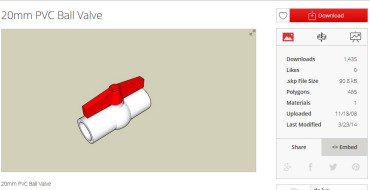

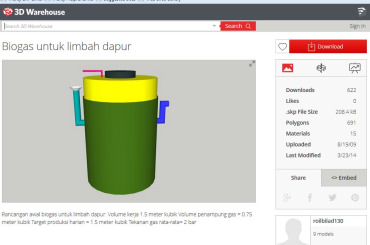
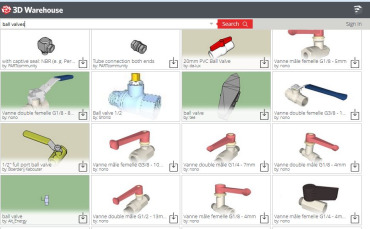
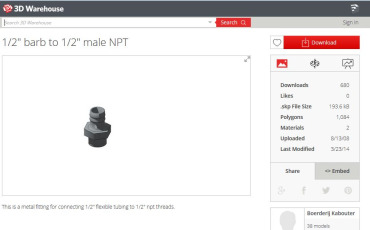
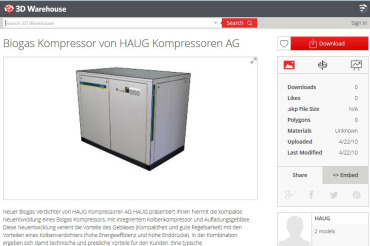
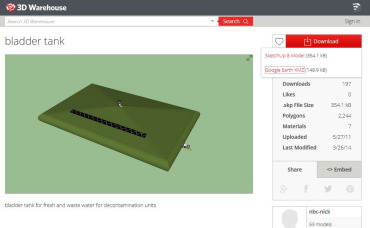
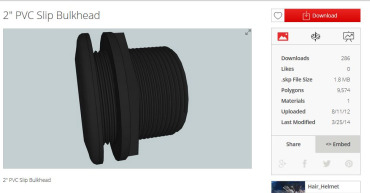
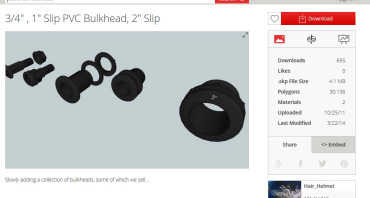
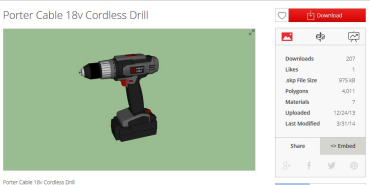
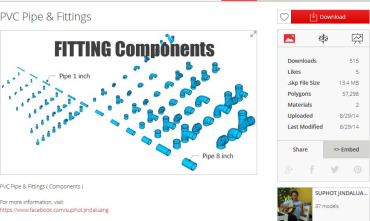
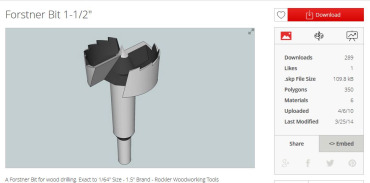
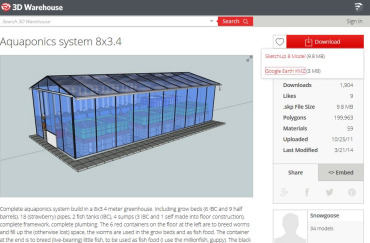
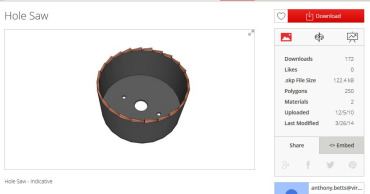
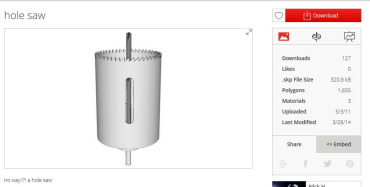
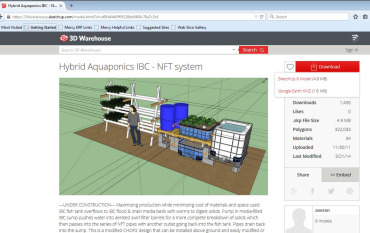
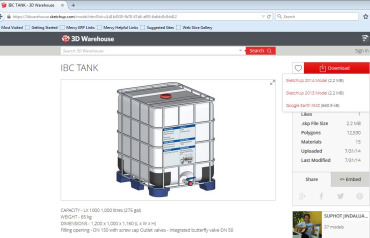
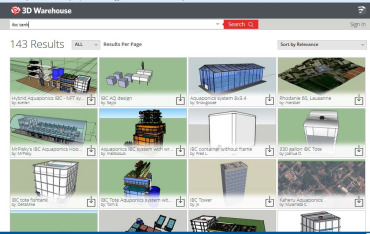
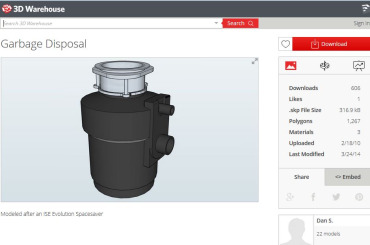
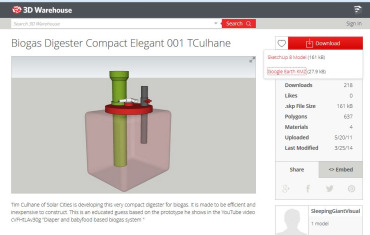
Pretty cool and totaly
Pretty cool and totaly interesting!
great stuff
Took me a while to find this spot but i'm finally here and that's all that matters.
Thanks Thomas!
Bests!